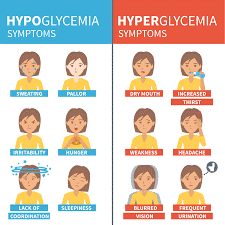A nurse manager is preparing an educational session for nursing staff about how to provide cost-effective care. Which of the following methods should the nurse include in the teaching?
Delegate non-nursing tasks to ancillary staff.
Stock client rooms with extra supplies.
Assign dedicated equipment to each client's room.
Change continuous IV infusion tubing every 24 hr.
The Correct Answer is A
A is correct because delegating non-nursing tasks to ancillary staff allows nurses to focus on more complex and skilled tasks that require their expertise and judgment, thus improving efficiency and quality of care.
B is incorrect because stocking client rooms with extra supplies increases waste and costs, as well as clutter and infection risk.
C is incorrect because assigning dedicated equipment to each client's room reduces availability and accessibility of equipment for other clients, as well as increases maintenance and cleaning costs.
D is incorrect because changing continuous IV infusion tubing every 24 hr is not cost-effective, as it does not reduce the risk of infection significantly compared to changing it every 72 hr, according to current evidence-based practice guidelines.
Nursing Test Bank
Naxlex Comprehensive Predictor Exams
Related Questions
Correct Answer is A
Explanation
A. Irritability: Correct. Irritability is one of the signs of hypoglycemia, which occurs when blood glucose levels fall below 70 mg/dL (3.9 mmol/L). Other signs include shakiness, sweating, hunger, headache, confusion, and blurred vision.
B. Increased urination: Incorrect. Increased urination is one of the signs of hyperglycemia, which occurs when blood glucose levels rise above 180 mg/dL (10 mmol/L). Other signs include thirst, dry mouth, fatigue, nausea, and fruity breath odor.
C. Vomiting: Incorrect. Vomiting is not a specific sign of hypoglycemia or hyperglycemia, but it can occur as a complication of either condition if left untreated or poorly managed.
D.Facial flushing: Incorrect. Facial flushing is not a sign of hypoglycemia or hyperglycemia, but it can occur as a side effect of some medications used to treat diabetes, such as niacin or rosiglitazone.

Correct Answer is A
Explanation
Choice A reason:
The statement is correct because chickenpox is highly contagious, and visiting someone with active chickenpox can put the pregnant individual at risk of contracting the infection. The recommendation is to avoid contact with individuals who have chickenpox, especially during pregnancy. The correct approach is to stay away from the infected person until they are no longer contagious (which is usually after all the sores have crusted over and dried up).
Choice B reason:
The statement Is incorrect because taking antibiotics for a viral infection is not appropriate, as antibiotics are only effective against bacterial infections, not viruses. Using antibiotics inappropriately can lead to antibiotic resistance and other potential side effects. Viral infections are generally managed with supportive care.
Choice C reason:
The statement is incorrect because handwashing is an essential infection prevention measure, but washing hands for 10 seconds with hot water may not be sufficient to remove germs effectively. The recommended duration for handwashing is at least 20 seconds with soap and water.
Choice D reason:
The statement is incorrect because cleaning a cat's litter box during pregnancy is not recommended due to the potential risk of exposure to the parasite Toxoplasma gondii, which is found in cat faeces. Toxoplasmosis can cause serious health issues in the developing foetus. It is best for pregnant individuals to avoid cleaning the litter box and have someone else do it or wear gloves and wash hands thoroughly afterward if no one else can do it.
Whether you are a student looking to ace your exams or a practicing nurse seeking to enhance your expertise , our nursing education contents will empower you with the confidence and competence to make a difference in the lives of patients and become a respected leader in the healthcare field.
Visit Naxlex, invest in your future and unlock endless possibilities with our unparalleled nursing education contents today
Report Wrong Answer on the Current Question
Do you disagree with the answer? If yes, what is your expected answer? Explain.
Kindly be descriptive with the issue you are facing.
